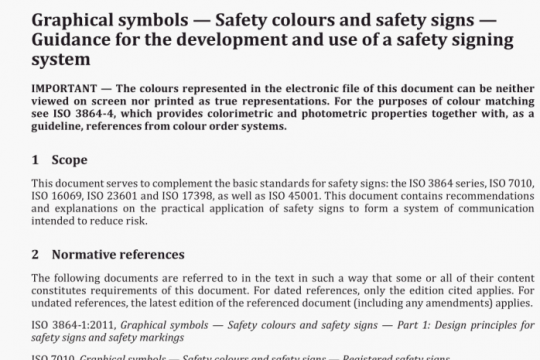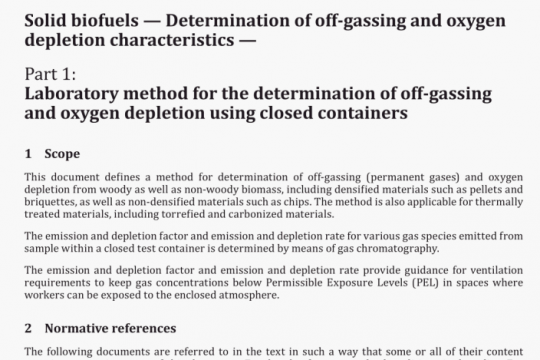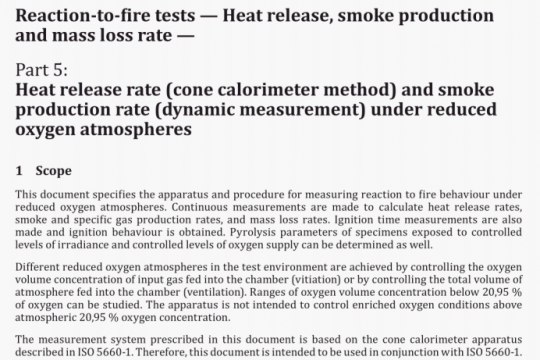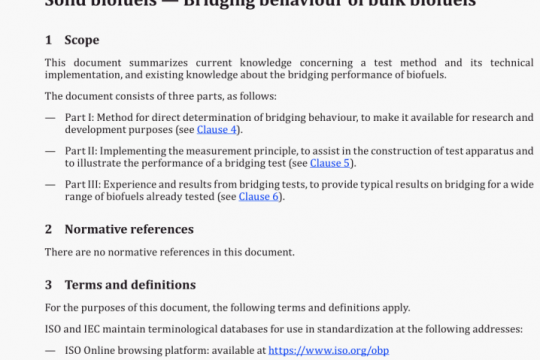ISO 16322-3 pdf free download
ISO 16322-3-2021 pdf free download.Textiles一Determination of spirality after laundering一 Part 3: Woven and knitted garments.
This document specifies procedures to measure the spirality or torque of woven and knitted garments after domestic laundering.
The results obtained from different procedures might not be comparable.
This document is not intended to measure the spirality of garments as manufactured, but rather the spirality after domestic laundering.
NOTE Some fabric constructions, such as denim, can have spirality intentionally introduced during manufacturing. Garments made of fabrics from circular knitting machines can have inherent nonverticality of wale alignment.
2 Normative references
The following documents are referred to in the text in such a way that some or all of their content constitutes requirements of this document. For dated references, only the edition cited applies. For undated references, the latest edition of the referenced document (including any amendments) applies.
ISO 139, Textiles — Standard atmospheres for conditioning and testing
ISO 6330, Textiles — Domestic washing and drying procedures for textile testing
3 Terms and definitions
For the purposes of this document, the following terms and definitions apply.
ISO and IEC maintain term inological databases for use in standardization at the following addresses:
— ISO Online browsing platform: available at https://www.iso.org/obp
— IEC Electropedia: available at http://www.electropedia.org/
3.1 spi ra lity torque
<in garments>rotation. usually lateral, between different panels of a garment resulting from the release of latent stresses during laundering of the woven or knitted fabric forming the garment
Note I to entry: The phenomenon is sometimes referred to as twist, for example, denim jean leg twist.
4 Principle
Test specimens are prepared, marked and laundered according to specified procedures. Spirality is measured in percentage of a marked distance.
9 Laundering
9.1 Select laundering conditions according to ISO 6330 that correspond to those which the garment will be exposed.
9.2 Perform the selected number of laundering cycles.
9.3 After the final laundering cycle, condition garments in the standard atmosphere for testing textiles according to ISO 139.
10 Assessment
10.1 General
Specimens should be placed flat on a smooth surface in their natural orientation.
10.2 Assessment by procedure
10.2.1 Procedure A — Garment, within-panel
Place the horizontal leg of a right angle device along line YZ and the second leg on a perpendicular downward from point B. Mark the point where the angle device intersects with line YZ. This is point A’ (see Figure 2).
Measure and record AA’.
Calculate the percentage spirality (X) of each garment to nearest 0,1 % as shown in Formula (1):
X=100(AA’/AB) (1)
Calculate and report the mean percentage spirality in the garments tested.
10.2.2 Procedure B — Garment, side panel
The side seam or edge fold at the bottom hemmed edge is marked. This is point A’.
Measure and record line AR and AA’ (see Figure 4).
Calculate the percentage spirality (X) of each garment to the nearest 0,1 % as shown in Formula (2):
x=ioo(fl (2)
AR)
Calculate and report the mean percentage spirality in the garments tested.
11 Test report
The test report shall contain the following:
a) a reference to this document, i.e. ISO 16322-3:202 1;
b) details of garment tested;
c) mean percentage spirality of garments prior to laundering, if any;
d) mean percentage spirality of the garments tested after laundering;ISO 16322-3 pdf download.




